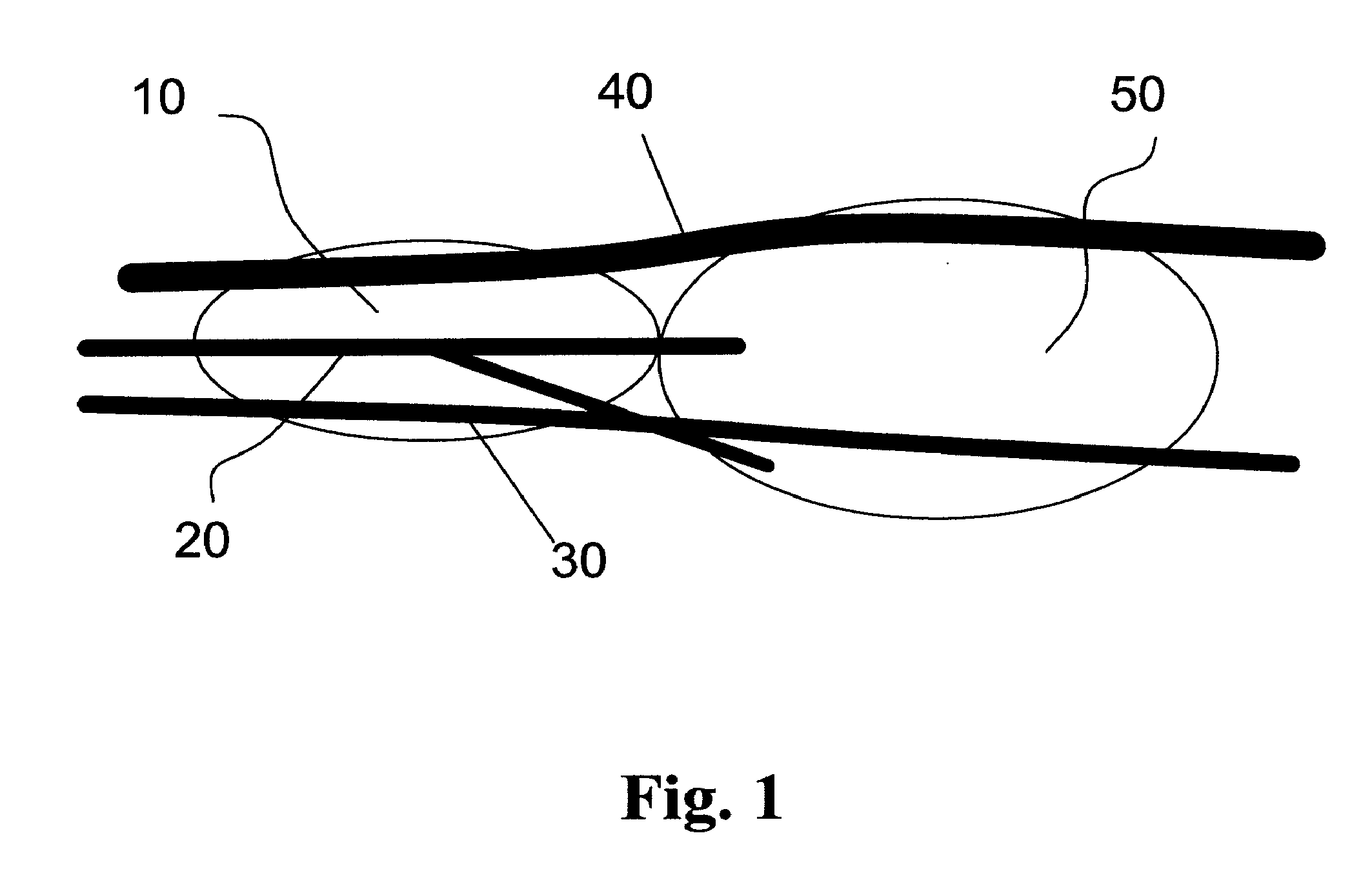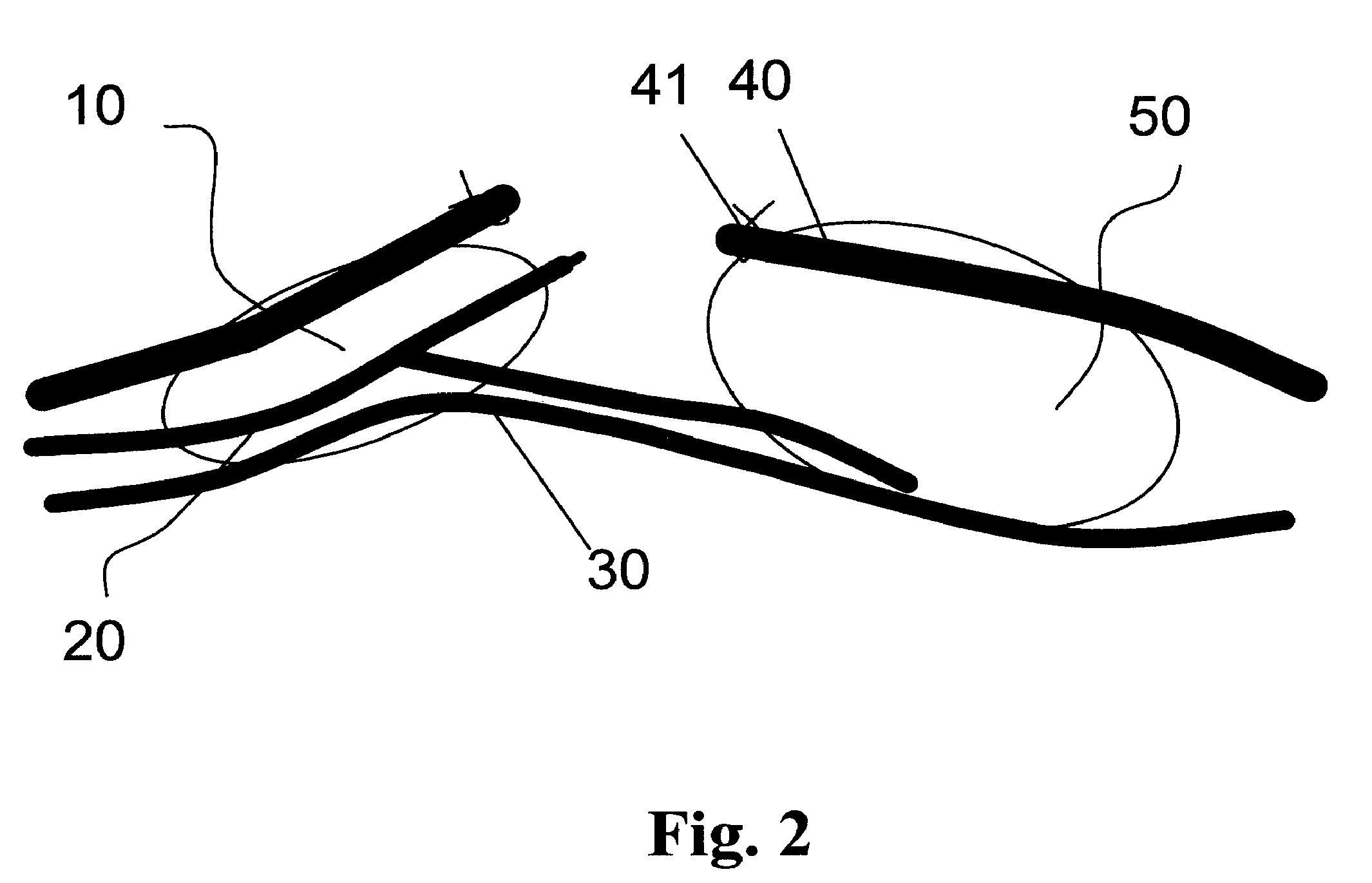Intraoperative Tissue Mapping and Dissection Systems, Devices, Methods, and Kits
a tissue mapping and tissue technology, applied in the field of surgical navigation and control, can solve the problems of consuming significant surgical time, affecting the accuracy of surgical results,
- Summary
- Abstract
- Description
- Claims
- Application Information
AI Technical Summary
Benefits of technology
Problems solved by technology
Method used
Image
Examples
example 1
Sample Tissue
[0115]An example proximity system 900 is illustrated in FIG. 14. In this example, the proximity system uses a modified Parkell Sensimatic Electrosurge 500-SE 904 dissection element which was modified so that the activation pedal 910 was in series with a reed relay 909. A Pepper & Fuchs NBN4 inductive proximity sensor element 907 was then affixed to a wire electrode 905 that was connected to the active output of 904 and covered with an insulator 906. Fresh raw chicken breast 1, was used as a test tissue sample and was rested on a grounding electrode 911 and a steel plate reference element 902. The sensing element 907 was expected to be triggered by the reference element 902 at the proximity limit 903. Output of the sensing element 907 was connected to an operational amplifier 908 configured as an inverter and to the +12 V voltage by the 220 k ohm resistor 914. The output of 908 was connected to the relay 909. When the sensor element 907 was not triggered the output of th...
example 2
[0116]Another proximity system could be adapted from the proximity system in FIG. 14, using a Foley catheter with, for example, aluminum film coating. The modified catheter would then be inserted into the urethra and would serve as the reference element. This system would be used to preserve the prostatic urethra during a modified radical prostatectomy procedure where the prostate is resected but the urethra is left intact. As noted elsewhere this would have the advantage of minimizing trauma to the urethra and associated structures and is expected to result in shorter recovery times and less urinary incontinence and other complications.
example 3
Radical Prostatectomy
[0117]Another proximity system could be used to target a dissection of an interface between the neurovascular bundles 30 and the prostate 10FIG. 3, during radical prostatectomy. In this example, six neodymium magnets (NdFeB) reference elements coated with Teflon, cylindrically shaped, 500 um in diameter and 1 mm long, would be inserted before radical prostatectomy procedure transanally using intraoperative ultrasound imaging and a biopsy trochar with a tip modified to hold and deploy each reference element. Each reference element would be positioned at the prostate-neurovascular bundle interface 32, three on the left and three on the right. A lap aroscopic tool, such as a tissue retrieval system, would then be adapted to carry, for example, a three axis magnetic sensor such as a Honeywell HMC1023 Three-Axis Magnetic Sensor surface mount in a package with white orientation markings, sensor element. Thereafter, a robotic surgical system, such as the DaVinci roboti...
PUM
 Login to View More
Login to View More Abstract
Description
Claims
Application Information
 Login to View More
Login to View More - R&D
- Intellectual Property
- Life Sciences
- Materials
- Tech Scout
- Unparalleled Data Quality
- Higher Quality Content
- 60% Fewer Hallucinations
Browse by: Latest US Patents, China's latest patents, Technical Efficacy Thesaurus, Application Domain, Technology Topic, Popular Technical Reports.
© 2025 PatSnap. All rights reserved.Legal|Privacy policy|Modern Slavery Act Transparency Statement|Sitemap|About US| Contact US: help@patsnap.com



